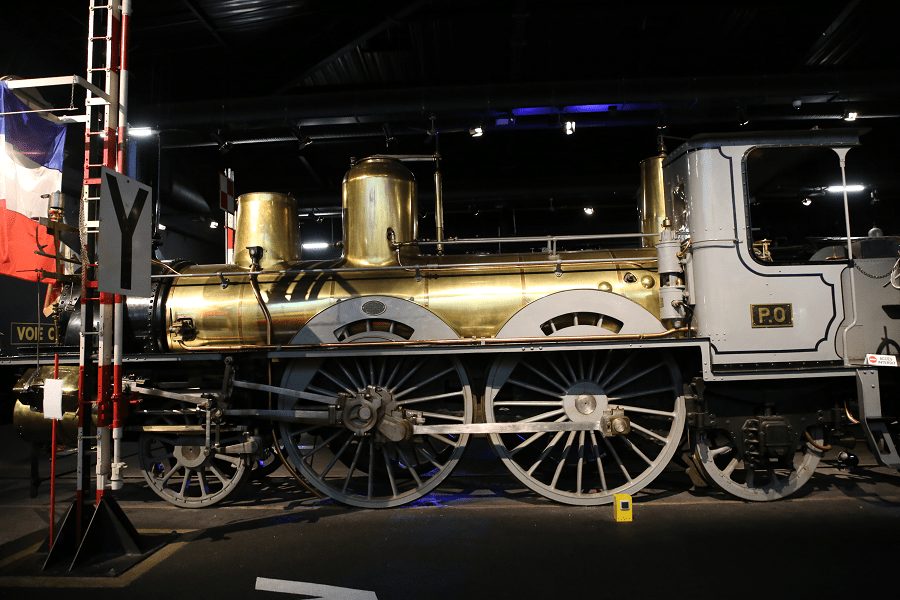Presidential locomotive Forquenot PO 340 from 1883
It was the engineer Victor Forquenot who developed the first locomotives of the PO with two driving axles in 1875. To improve stability at high speed he added the carrying axle at the rear and this configuration gave birth to a large number successful locomotives which were built for 20 years from 1876. It is undoubtedly this success which decided the PLM to equip itself also with such machines, even if it means transforming 50 almost new locomotives.
Victor Forquenot de La Fortelle was a French railway engineer born in Laon on August 9, 1817, and died at the Château de Vaux-Varennes, in Bouvancourt on October 18, 1885.
Graduated as an engineer of arts and manufactures in 1838, he began as a voluntary worker and draftsman at the John Cockerill Establishments in Liège, then Seraing, in 1839 and 1840. He continued as a mechanical fitter and draftsman at the Cavé workshops in Paris between 1841 and 1843. In 1844 and 1845, he was employed as a draftsman in the service of Émile Clapeyron for state construction of the Northern Railway.
In 1846, he was a material engineer for the railway company from Tours to Nantes. He studied and built the equipment of this company, the types of cars and wagons of which were later adopted for the line from Paris to Chartres and the Grand Central railway.
In 1852, he was an equipment engineer for the Compagnie du chemin de fer de Paris à Orléans in charge of the construction of new equipment and the control of the traction control following the merger of the companies of the Center, of Orléans in Bordeaux, of Tours in Nantes with the company of Paris in Orléans. When Camille Polonceau died in 1859, the Compagnie du chemin de fer de Paris à Orléans chose him to replace him as chief engineer of equipment and traction. He increased the number of station locomotives. He introduced the standardization of equipment into the company.
He studied the material to allow them to fit better in the curves of small radius. He seeks to increase the power of locomotives. He was interested in a new technique developed by the director of the Compañía de los Caminos de Hierro del Norte de España, Louis Le Chatelier, former Chief Operating Officer of the Paris-Orléans company: counter-steam. The good results of this system led him to generalize it from 1870. A total of 510 locomotives were modified.
He studied 19 series of steam engines with the same basic layout between 1860 and 1874 with a number of common parts between them. He developed in 1864 the Forquenot 120 locomotive for fast trains which was later transformed into Forquenot 121 which allowed the Paris-Bordeaux line to be the fastest line in the world at that time. These locomotives were used until 1945.














